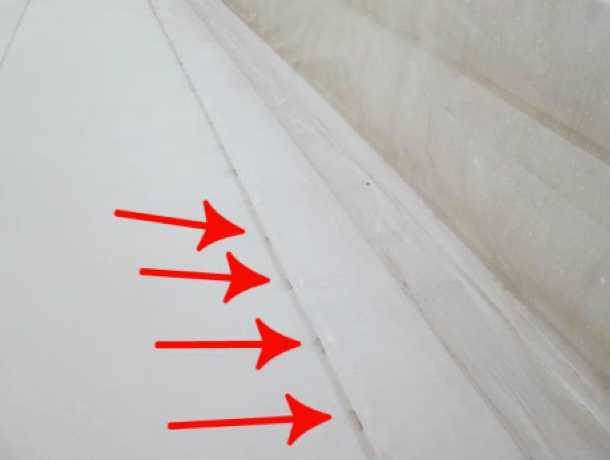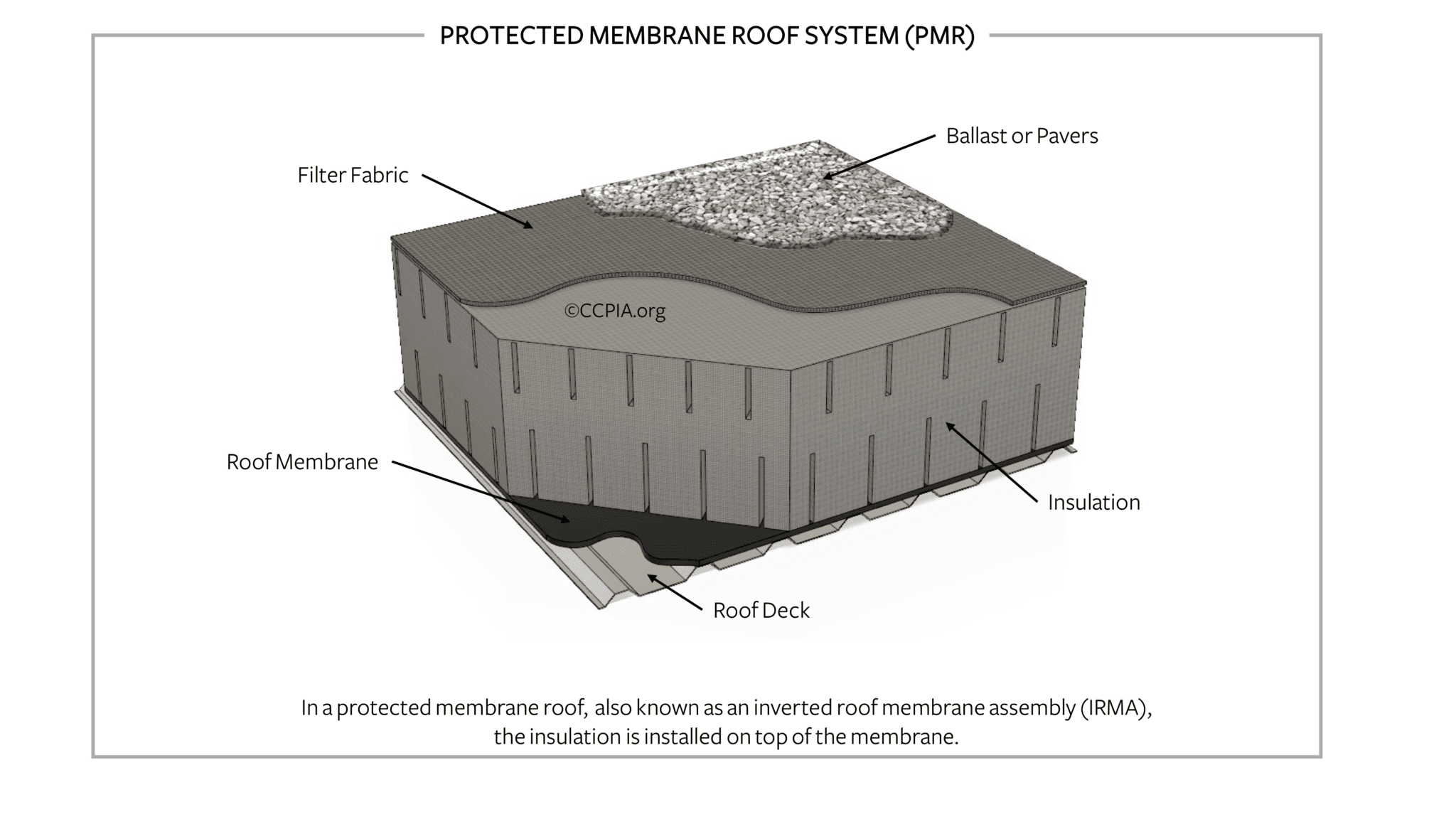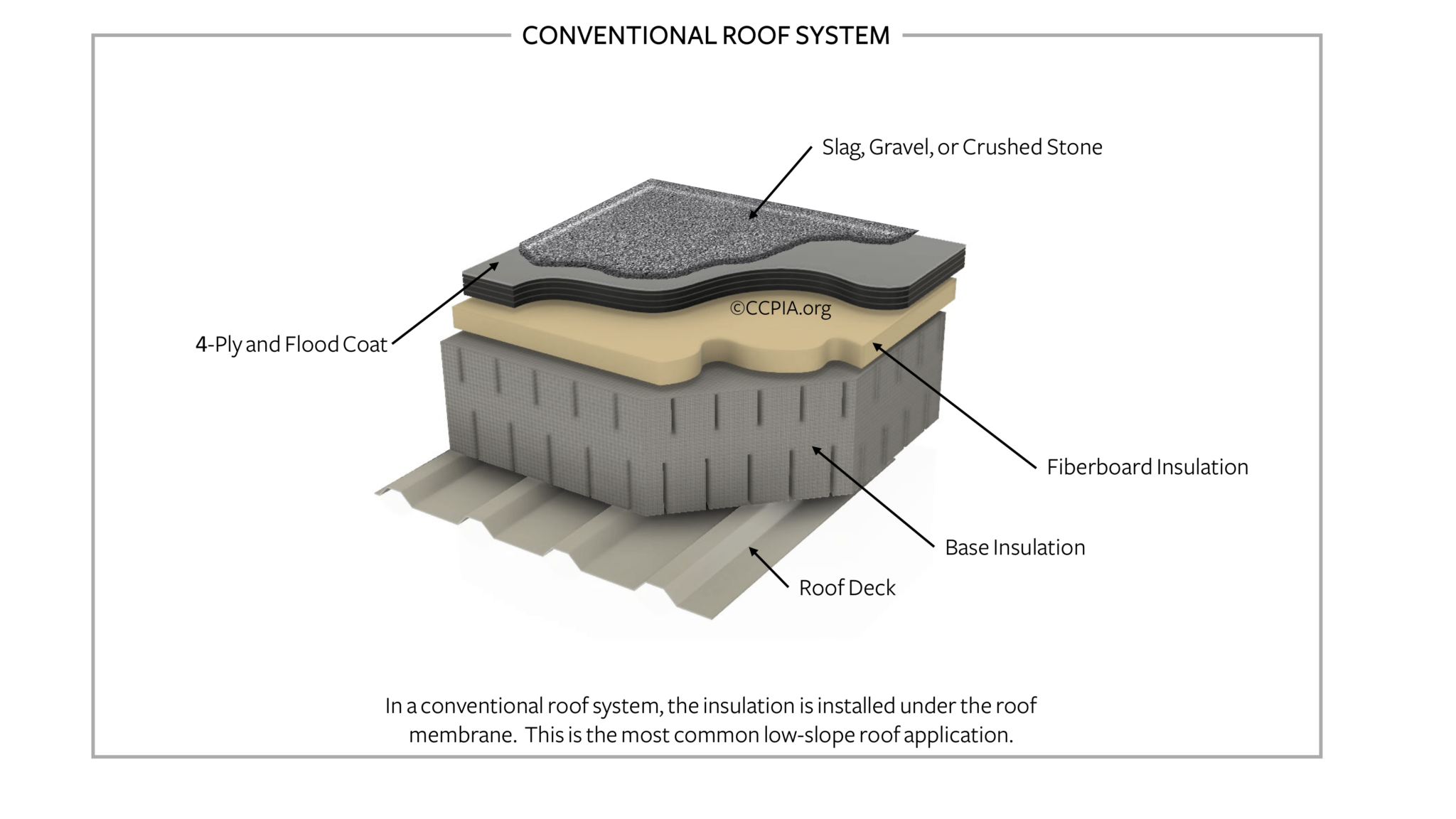Conventional Roof System
In a conventional roof system, the insulation is installed under the roof membrane. This is the most common low-slope roof application.
The location of the insulation in a conventional roof system poses a few disadvantages. When inspecting, look signs of the following:
1. Membrane aging.
When insulation is used directly under the roof membrane, solar heat does not readily pass through the roofing system, which increases the roof’s surface temperature. This, in turn, accelerates the oxidation and evaporation of volatile oils in bitumen-based membranes. Look for brittle, cracked or alligatoring surfaces. This is also caused by ultraviolet degradation.
2. Thermally-induced expansion and contraction.
The roof membrane may experience increased expansion and contraction from the increased surface temperature and rapid daily temperature changes. Rapid daily temperatures are caused by the lack of heat transfer through the roof assembly.
During a hot day, the roof membrane directly next to the insulation becomes much hotter than the exposed surface and air temperature. Then, in the evening, when the sun goes down, the entire membrane’s temperature returns to air temperature rather than the interior temperature. This can also cause membrane aging, along with ridging, splitting, and lap-shear stress. Long-term thermally induced expansion and contraction can also cause the insulation to shift. Look for changes in the membrane surface.
3. Moisture within the roofing system.
The interior and exterior surface temperature range caused by thermal insulation may increase the likelihood of water vapor entering through the warm side and condensing within the roof system. Moisture entrapment can be detrimental, as it can destroy thermal insulation, enter cracks and joints of the roof deck, leak into the building’s ceiling, and even cause the membrane to separate due to freezing and thawing cycles. Look for sagging in the roof surface, efflorescence, and corrosion of accessories (like fasteners). Moisture may enter the roof system during the installation phase or while in service. Ventilation and vapor barriers help to mitigate these effects.

Mechanical fasteners are exposed due to membrane shrinkage.

Ponding has formed due to insulation collapse.
Protected Membrane Roof (PMR)
In a protected membrane roof, also known as an inverted roof membrane assembly (IRMA), the insulation is installed on top of the membrane. The insulation may be exposed to water, so it should have minimal water-absorption characteristics. Extruded polystyrene (XPS) is the most suitable type. The XPS boards are placed over the membrane and held down by a layer of ballast or loose pavers on top.
If ballast is used, a filter fabric should be placed between the ballast insulation to prevent damage to the XPS. The other disadvantages of insulation discussed for the conventional roof system do not apply, since the roof membrane isn’t exposed. However, if the ballast or loose pavers on the exposed surface shift, the roofing system may be compromised; this is common after high winds.

Additional Commercial Inspector Resources:
Low-Slope Roof Components
Low-Slope Roof Construction and Failure Assignment of Responsibilities
Commercial Property Inspection Technical Course (Live)



